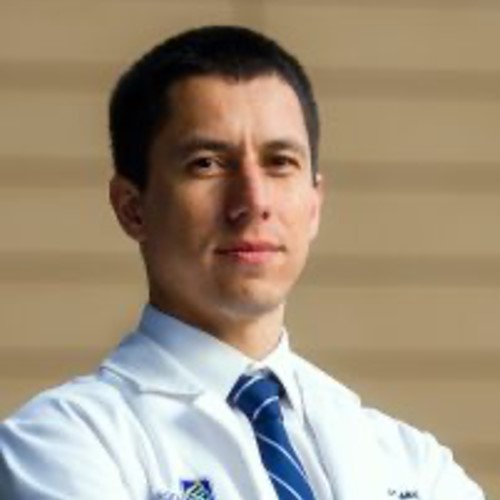Nano to microscale engineering and bioprinting of complex craniofacial tissues
Speaker

Dr. Luiz E. Bertassoni graduated with a DDS degree in Brazil, obtained a PhD in Biomaterials from University of Sydney, and two postdoctoral degrees in Bioengineering from University of California San Francisco, and the Division of Health Sciences and Technology at Harvard Medical School and MIT. Currently, Dr. Bertassoni is an Associate Professor at Oregon Health & Science University. He also holds appointments at the department of restorative dentistry, the OHSU Center for Regenerative Medicine, the Department of Biomedical Engineering and the Cancer Early Detection Advanced Research center (CEDAR) at the Knight Cancer Institute. Dr. Bertassoni leads a multidisciplinary research group working on various aspects of biomaterials and tissue engineering. His work has encompassed various aspects of micro-scale technologies and bioprinting for tissue regeneration; nanoscale structural and mechanical properties of mineralized tissues; and different aspects in the field of ‘organs-on-a-chip’. Luiz has published over 60 publications, including several papers in high-impact journals such as Nature Communications, Advanced Materials, Advanced Functional Materials and others. He is a recipient of over 30 international research awards. He serves as a reviewer for over 50 international journals, is an editorial board member of another 6, and associate editor for the Journal of Dental Research (Special Issue), Journal of Translational Medicine, and Frontiers in Dental Medicine.
Disclosure: Dr. Bertassoni has no relevant financial relationships to disclose.
Course Description
This lecture summarizes a series of recent projects focused on the development of innovative methods to engineer complex , vascularized and innervated , craniofacial tissues, such as bone, dentin and the dental pulp. It also covers examples of how microfluidic models of these complex tissues can be used to better understand disease conditions, such as dental caries/pulpitis, cancer and cancer metastasis into bone.
Educational Objectives
- To describe the importance of mimicking the bone microenvironment for improved regeneration
- To explain how the tooth-on-a-chip can be used as a model system
- To describe the interaction of engineered bone with cancers
Contact
For information, please contact Penn Dental Medicine Continuing Dental Education at:
PDMContinuingEd@dental.upenn.edu

